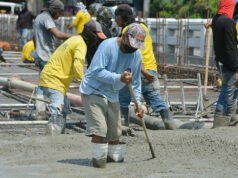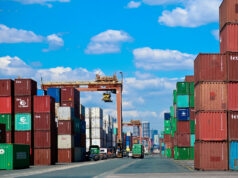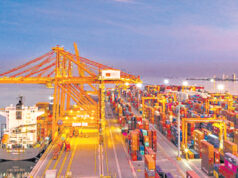Gov’t says COVID-19 spending has reached P352.7 billion
THE GOVERNMENT has spent P352.7 billion so far in responding to the coronavirus disease 2019 (COVID-19) pandemic and has used up much of the readily-accessible funding from this year’s budget.
In a taped Palace address aired on Friday, Department of Budget and Management (DBM) Secretary Wendel E. Avisado said the government has spent P352.7 billion so far for its COVID-19 response, or 88.84% of the P397 billion in capital outlays it can tap from this year’s budget.
“Ang pwede lang natin galawin (The budget items we can tap around), which we have done, is P397 billion more or less. Ito yung capital outlay ng mga departments at saka yung Congress-initiated. Sa ngayon, ang nagagamit na natin ay P352 billion na. So konting konti na lang ang natitira (These are capital outlays of departments and Congress-initiated items. We have used P352 billion so far, so there’s little left),” Mr. Avisado said.
Out of the approved P4.1-trillion spending plan for this year, Mr. Avisado said P1.249 trillion cannot be touched as these were already automatically appropriated to agencies, to local government units for their internal revenue allotment and for the government’s debt servicing bill.
This leaves the national government P2.8 trillion in “new appropriations,” which are used for expenditures on personnel services, maintenance and other operating expenses, financial expenses and capital outlay, he said. Of this, the government can only redirect funds from capital outlays labeled as “for later release,” which Mr. Avisado said is at around P397 billion.
Finance Secretary Carlos G. Dominguez III said the P352.7 billion spent were partly financed by the government’s tax collections — which he flagged to be declining — savings, and loans from multilateral lenders, including the World Bank and the Asian Development Bank.
Mr. Dominguez however assured the government has “sufficient” cash, but noted the government is restricted to expenditures authorized under the P4.1 trillion spending plan, he said in the same address.
With this, the government will have to ask the Congress for a higher 2020 budget when lawmakers resume hearings on May 4. The P4.1-trillion spending plan for this year was approved in December, before the virus outbreak hit the country.
To plug the funding gap, President Rodrigo R. Duterte again floated the possibility of selling state-owned properties if needed.
However, Mr. Dominguez said via Viber that the government has “not reached the point at which we are considering sale of major government assets.”
DBM’s Mr. Avisado said the administration’s economic development cluster, which includes the Budget and Finance departments and the National Economic and Development Authority (NEDA), have been meeting for “forward planning” which he said will again require “a lot of funding.”
He said the plan will help the country transition to “the new normal” to avoid a second wave of infections and would also provide more jobs in the near term.
Earlier, the Budget department said it will no longer release 35% of the budget of state agencies and asked them to adopt cost-cutting measures to shore up funds for the government’s response to the pandemic.
State agencies were ordered to defer non-essential purchases and activities such as buying new vehicles, celebrations, construction or renovations of government buildings as well as unnecessary foreign and local travels, among others.
The government is sourcing funds for COVID-19-related spending from tax collections, savings, dividends from state-owned firms and other contributions. The Department of Finance is also negotiating loans from multilateral lenders to partially fund its emergency measures, and is also looking to tap commercial markets for more funding.
So far, the Asian Development Bank has approved a $1.5-billion loan to aid the government’s response to the pandemic and assistance for affected sectors. The World Bank, meanwhile, approved $100 million recently on top of the $500 million okayed earlier this month for the Third Risk Management Development Policy Loan. — B.M. Laforga



